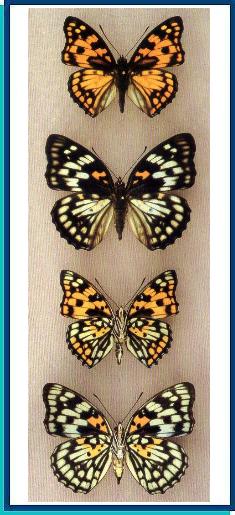LEPIDOPTERA
N Y M P H A L I D A E Swainson, 1827
SEPHISA Moore, 1822
Sephisa princeps Fixsen, 1887
Sephisa princeps Fixsen, 1887

• TYPE LOCALITY. «Pung-Tung» [Korea].
•SYNONYMS: cautcL (Leech, 1887); albimacuicL Leech, 1890.
• RANGE. Amur and Ussuri regions; NE. China, Korea.
• DISTRIBUTION AND VARIATION. The Amur and Ussuri regions are populated by the nominotypical subspecies.
• TAXONOMIC NOTES. Earlier this taxon was considered as a subspecies of Sephisa dichroa (Kollar, [1844]); the latter inhabits N. India, Pakistan, Nepal and differs from S. princeps in appearance and host plants (Dantchenko et al., 1996).
• HABITATS AND BIOLOGY. The life history has been described in due detail (Dantchenko et al., 1996). Flying in July to August in oak forests. Host plant: Quercus mongolica. Females occurring in tree crowns while males, usually solitary, often on puddles. The female lays eggs in a convolute leaf by some dozens at a time. Larvae of first two instars keep living together. Five instar stages are passed during about 60 days. Pupa hanging on the leaf petiole. Pupal stage lasting about two weeks.
Photo and text: Guide to the BUTTERFLIES OF RUSSIA and adjacent territories Volume 2. PENSOFT, Sofia - Moscow. 2000